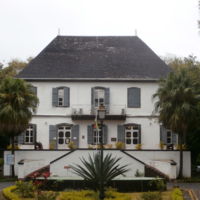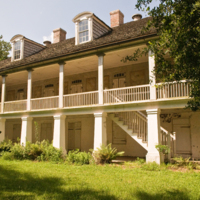
National History Museum
The National History Museum of Mauritius opened in 1948. It is housed in an French colonial villa built in 1772 that was formerly used as a military hospital, a naval museum and the Museum of Historical Souvenirs. It is managed by the Mauritius Museums Council, under the governance of the Ministry of Arts and Culture. The museum explores the social and cultural history of Mauritius; from its discovery by the Portuguese at the start of the sixteenth century, through its successive colonisations by the Dutch, French and British, up to the end of the nineteenth century.
The first floor of the museum exhibits the Dutch, French and Anglo-French wars. Each room explores a different era with artefacts from the period; these range from furniture and decorative arts to weapons, maritime equipment and ceramics.
On the second floor of the museum there is an exhibition dedicated to the British rule of Mauritius, from 1810 until 1968. The interpretation examines the transformation of Mauritius from a maritime economy to an agricultural one, with a key focus on the production of sugar. Alongside this is a discussion of the use of slavery and the development of the slave trade, indentured labour and Indian immigration. Artefacts here include agricultural tools, paintings and drawings depicting the changing landscape and the workforce, and archival documents.

The Whitney Plantation
Widely claimed to be the first museum in America to solely address slavery, the Whitney Plantation is a plantation estate, museum and memorial outside New Orleans, on Louisiana's famed River Road. During the eighteenth and nineteenth centuries, the plantation was home to the Haydel family, and their enslaved workers. The site was bought in 2000 by a retired lawyer, John Cummings, who funded the renovation and redevelopment of the site, which opened to the public as a museum in 2014. On arrival, visitors must join a guided tour to see the majority of the site, but the museum is open to all.
On the property visitors will find a range of exhibits, including the Mansion House, slave quarters, a blacksmith's shop and a Baptist church. There is also a 'Wall of Honour' which features the names of all those enslaved at the plantation, as taken from the site's archives. In addition, there is a sculpture installation created by American artist Woodrow Nash called 'The Children of Whitney,' that seeks to remind visitors that slavery affected children as well as adults.
The site houses a significant collection of artefacts too. These range from plantation tools and house furniture. There is even the largest collection of sugar kettles in the whole of Louisiana. Much of this collection has been purchased at auctions around the USA, in a bid to redisplay the site as it was during the antebellum period. There are three archaeological sites which also contribute collections of material linked to the lives of the enslaved themselves. All of this provides visitors with a unique perspective of plantation life, and helps to break down the ignorance still surrounding histories of American enslavement.